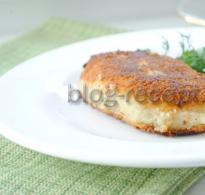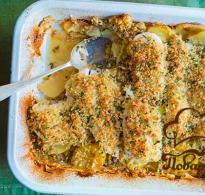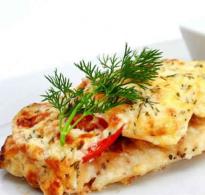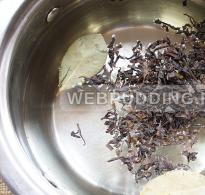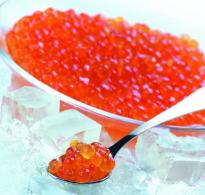Testoplasty. Modeling from salt dough or “How to entertain a child”
The plastic material, accessible to everyone, allows you to create unique items for the interior. Salt dough has long been used to make beautiful crafts. Together with your child, you can sculpt animal figurines, New Year’s compositions, and even entire thematic pictures from the pliable mass.
Features of working with salt dough
Anyone can make crafts from this material - Small child, beginning to practice the art of modeling, and an adult who mastered the process in kindergarten. To prevent the sculpted product from deteriorating, you need to do everything correctly - prepare the mass for modeling directly and dry the figures. Coloring also has its secrets, which you will definitely learn about.
- How to cook salty dough for modeling
The consistency is easy to work with, but for a successful craft, proper mixing is necessary. If you correctly follow all the proportions indicated in the master classes, you can make a pliable material. Figures made from it retain their original appearance. There are two popular recipes salt dough, which are successfully practiced among homemade hand-made lovers.
Recipe No. 1
- Wheat flour(BC) – 500 g;
- water (necessarily cold) – 200 ml;
- “Extra” salt – 200 g.
According to this recipe, the mass turns out to be of high quality, plastic and edible (which is important). All components of the material are edible, so it is great for teaching young children during developmental activities. If a child eats a finished craft, it will not cause harm to his own health. Products made from safe materials are the best choice for a curious baby.
Recipe No. 2
It is also suitable for sculpting with kids, because the consistency is plastic and you can sculpt anything. During the game, the child must be closely monitored so that the mass is not eaten. To prepare, you need to stock up on the following ingredients:
- white flour premium– 500 g;
- water (cold) – 200 ml;
- PVA glue – 2 tbsp.
The adhesive component in the composition guarantees the stability of the product made from the mass. This composition can be easily tinted and painted, and in addition, has a long hardening period (it is easy to correct minor defects in finished craft). Try both recipes to find the best one for your needs (depending on age, skill, etc.).
- How to dry crafts made from salt dough

– mandatory stage creating crafts from salt dough, thanks to which the products acquire strength. The drying process requires certain conditions, because when room temperature the figurine will not reach the desired condition, because in twenty-four hours it will dry out by only one millimeter. In the summer you can try to put it in the air, but this will not give much results. It is best to use an oven:
- At a temperature of 75°C, drying time will be an hour.
- At a temperature of 100°C – an hour.
- At a temperature of 120°C – half an hour.
- At a temperature of 150°C – half an hour.
Large items should be dried longer, but for small crafts the time can be reduced. To prevent the dough from sticking, cover the baking dish with foil. Decor in the form of beads, rhinestones, beads should be dried at temperature conditions no higher than 120 °C. You should not use a microwave oven or place crafts on a hot radiator, otherwise they may immediately become deformed and crack. From time to time you need to turn the figures over in the oven so that they are evenly baked on all sides.
- How to color dough products
The created and dried figurine can be painted in any of your favorite colors. Best choice For these purposes you will use acrylic paint or gouache. The painted product must be coated with colorless nail polish so that the paint lasts a long time and does not lose its richness and brightness over time. You can make a colored mass by adding the desired tone (it is better to use food coloring) while kneading flour.

What can you make from salt dough with your own hands?
Having mastered the technique of creating salted material for modeling, you can easily achieve mastery in which you can make crafts of any complexity. A new hobby can interest not only an adult, but also a child. Plastic dough is a wonderful material for creativity, development of hand motor skills, concentration and much more. There are a lot of ideas on what can be made from play dough, and crafts can be of any complexity and interesting to children of different ages.
Simple figures for children 2-3 years old
Having plastic material at hand, you can organize an educational activity for the youngest children. What can you make from salt dough for a two-year-old child? First, you should introduce the baby to the material - let him hold the mass in his hands, then clearly show what the dough is capable of, that is, make a bun or a snowman.
Small children are not capable of grandiose crafts, so it’s better to start by following them yourself. easy method and doing everything step by step:
- Roll out the dough with a rolling pin, and then press small objects in the form of curly pasta, beans or buttons onto the finished layer.
- Cut out dough with cookie cutters.
- Roll balls of different sizes from plastic material, creating little men, a snowman, a kolobok, and a smesharik.
- Roll out sausages, making snails, caterpillars and other elementary figures.

For children 3-4 years old
For children three or four years old, rolling out alone is not enough, because the child has already grown up and can perform more complex tasks. Interesting idea For creative activities there will be pictures made from salt dough. The child, with the help of an adult, will create a three-dimensional image on a piece of paper, and then color it. Pictures can convey any plot: from seasons and mini-images of the country to episodes of fairy tales and cartoons.

For modeling with children 5-6 years old and older
If you can’t give small children intricate tasks, creative six-year-olds can master complex crafts made from salt dough. For example, these could be figurines in the form of a three-dimensional sheep, a mouse on cheese, or an original vase with a chic bouquet of flowers. Children aged five to six years can master technology handmade using a salty consistency. Following the example of an adult, a child can cope even with those products that require significant concentration and manual dexterity.

How to make crafts from salt dough - step-by-step instructions
The process of sculpting crafts is easy, takes some time, but gives you a chance to pay attention to your baby. With easy-to-follow instructions and several educational video tutorials at hand, parents can quickly understand how to make a certain craft from salt dough and explain it to their child. There are many product options, choose one or more and get started!
Flowers
The created products will look not just beautiful, but also believable. For example, to make a rose you will need minimal effort:
- Roll out the dough prepared in advance (no more than half a centimeter thick).
- Using a round object in the shape of a glass, squeeze out five identical petal elements.
- Place the circles horizontally on top of each other so that each component touches, protruding a centimeter.
- Roll the steps into one roll, and then place the whole structure with one side on a hard table surface.
- Spread the petals of the bud on the top of the flower from the center in different directions.

Toys for the New Year
Original jewelry done easily and quickly. If you don’t know what you can make from salted play dough New Year, consider hanging toys for the Christmas tree. To make it you will need salt dough, colored paints and wire for fastening:
- Bell. You need to roll out the ball and make a bell-skirt. Attach the tongue to a wire, which will serve as a fastener to spruce or pine branches. Finished figure dry, paint in bright shades.
- Figurines-pendants. Use a cookie cutter to make a figure. Use a toothpick or cocktail straw to make a hole in the top. After drying, paint the toys, and thread a thick thread or thin ribbon into the hole.

Crafts for February 23
The best gift the man will receive a symbolic gift that can emphasize valor, courage and strength. Thanks to special molds You can easily make a gift for February 23 in the form of a tank, soldier, or ship. To do this, roll out the salt dough into a layer and squeeze out the selected shapes from it using a mold. All that remains is to dry the souvenirs and paint them in military color.
Souvenirs for March 8
The best gift on Women's Day is flowers. Why not make them from salt dough? From plastic material you can create a bouquet that will delight you with its beauty for many years. Great gift a friend, mother, sister, grandmother will receive a vase of flowers:
- Make a lot of classic recipe, roll out the layer half a centimeter, cut a 15x10 cm rectangle from the piece.
- Create a hole in the top of the figure with a cocktail straw. This will make it possible to hang the product on the wall.
- Form a ball from another part of the dough, roll it out and make a vase, bending the neck slightly. Secure onto the prepared rectangular base.
- Roll out three stems, attaching them to the vase.
- Cut circles for the bud and twist to form a rose.
- Oval figures will serve as petals, on which make stripes.
- Decorate the vase with voluminous balls or chamomile.
- Dry the painting, paint it, and cover it with a layer of colorless varnish.

For the holiday, you can make decorative egg pendants that can be used to decorate cabinet handles, windows, or make an original garland. To do this, you will need an oval shape to squeeze out flat eggs from the material. On the top edge of the egg, use a cocktail tube or a marker cap to make a hole for the ribbon. Place the product on a baking sheet in the oven, dry it, and then apply the design you like to the eggs. acrylic paints or gouache. Secure the crafts on a long ribbon.
Video
There are an unlimited number of ideas for creating crafts from salt dough. There are a lot of master classes that help you get trained, and then make a memorable gift from the miracle material, for example, for a birthday. Beginning craftsmen who want to turn a simple hobby of crafts into a favorite hobby will be helped by a video that shows step by step what can be made from salted play dough.




Step 1 out of 3
I'll do it small retreat and I'll tell you the story. You and your child must prepare the dough (as we remember, it includes sour cream, flour, and other things mentioned above). After the dough will work. We will form it into a bun. Afterwards we put it out and bake it in the oven. During the entire process, you need to quote the fairy tale. After baking, you need to put the bun on a window to cool. Then, in secret from the child, the bun should disappear, i.e. roll away. Afterwards the Fox eats it...
A child can be dressed up in a fox costume to eat a bun. Very cool idea and script. My child was delighted.
So. Let's knead the dough. To do this, combine water, milk and salt with sugar in a bowl. Let's heat it up to a temperature so that you can hold your finger in the liquid for a long time. Then dilute the yeast in this liquid until completely dissolved. Sift flour into a bowl (it took me 2-2.5 cups). Pour the liquid into the flour and knead the dough. Add sour cream. When the flour has absorbed all the water, add oil. If it gets a little dry, add oil again. The dough will turn out like this. I didn't knead the dough with my hands. I took a mixer with a dough attachment (spiral) and worked with the mixer for about 7 minutes.
Step 2 out of 3
At the same time, you need to say, “The woman kneaded the dough with sour cream... set it to rise.”
Cover the dough with a towel and forget about it for 1 hour. It will triple in size. If not, let it sit longer.
When the dough has risen well, form a bun. How? Gather all the dough into a ball. Set aside a small piece of dough. These will be the eyes and nose. In this case, the child can be allowed to form these details. Roll it on a smooth surface on the table. It will become smooth and uniform. You will receive a ball. Press it down a little. It will become wider. Transfer the Kolobok to a baking tray lined with baking paper. Lay out the eyes and mouth. Give your child free rein and let him decorate the bun himself.

Ready!
Brush the entire bun (using a brush) with milk and leave for 20 minutes. Turn the oven to 180 degrees and preheat it. Place the resulting bun in the oven and bake. Check readiness with a match or toothpick. Dry = baked. After the bun, place on a plate. Place on the windowsill to cool (don’t forget the text of the fairy tale). After the kolobok, place on a plate. Place on the windowsill to cool (don’t forget the text of the fairy tale).

Program content:
· Continue to introduce children to the heroes of Russian folk tale“Kolobok”, encourage you to pronounce the words of a song from a fairy tale.
· Introduce the concept of “wild animals”.
· Achieve pronunciation of the sounds “r”, “u”.
· Introduce the habits of wild animals, teach them to imitate their habits.
· Learn to distinguish and find round objects.
· Continue learning to sculpt round objects.
· Enrich children's vocabulary: “wild animals”, “spherical”.
Progress of the lesson.
Educator: “Guys, do you like fairy tales? (rep.) This morning, when I came to kindergarten, I found this beautiful, fabulous box. Do you want to know what's in
Is Ney located? Then tell me, who left grandma? Who left grandpa?
(kolobok) Let's open the box and see who's sitting there? (open the co-
- timid, the teacher takes out a kolobok). Children, who is this? (Kolobok) Kolobok told me
Ushko, who also wants to be in our class. Do you want the bun to stay with us?
And the bun wants you to tell him what he is like. (He brings the bun to each child, the children examine it by touch.) What is it like? (soft, warm, round) What
Is it colors? (yellow) What is the shape of the bun? (round, spherical) And like a grandmother
Chalk around the barns? (children perform the movements) Guys, the bun wants to play with you
In Game. Do you want to play with him? (answer.) Now you will come to the table and choose those
Pictures on which objects similar to a circle are drawn (children complete the task)
Show me what looks like a circle in our group. (children show) Guys, kolobok
He liked playing with you, and he wants to invite you to his fairy forest. Do you want
Find yourself in a fairy forest? (children walk, walk along the path, find themselves in a fairy-tale forest)
Guys, who did the bun meet first in the forest? (bunny) How does a bunny jump? Let's
Let's jump like bunnies. (children jump) Who did the bun meet after the bunny? (wolf)
Let's walk on all fours like a wolf. (Children walk on all fours) Children, how does a wolf howl? (ooh-ooh) Who did the bun meet later? (to the bear) Let's walk like a bear and growl. (children perform movements and growl) Guys, who was the last person the bun met? (to the fox) Let's walk like a fox, (children imitate a fox) Now tell me,
Did you like the fairy forest? Let's remember who the bun met? (hare, wolf, bear, fox) Since these animals live in the forest, what are they called? (wild animals) Why are they called that? (answer) Now let's go back to the garden. But somehow our Kolobok became sad. He says he is sad alone. Do you want to help him?
Let's make him some friends. Today I broomed the barns, scraped the bottom of the barrel and made dough. After all, a kolobok should be made from dough? Tell me again, what shape is our bun? (round, spherical) means, to make a bun, what do we need to make from the dough? (ball). What hand movements will help us? (children show in the air).
Psycho-gymnastics:
Now let’s close our eyes and imagine that we have a bun in our hands. At first it is cold, then it gets warmer and becomes completely hot. Place it on the table and shake your hands. Now watch how I will make a bun. (The teacher makes a bun with words).
I got down to business in the morning
I warmed the dough in my hands
And made a bun
Gingerbread man ruddy side,
He has both a nose and a mouth
It's a pity that he doesn't sing songs!
I really like to sculpt
I will blind a gray wolf
Cowardly hare
A clubfoot bear.
And the fox? Not yet!
So that the bun doesn't eat
Guys, now roll up your sleeves and get down to business too. (Children make a bun) What a great fellow you are! What kind of koloboks you have made! Now let's roll them along the path and sing.
I'm a bun, a bun
Marked through the barns
Scratched the bottom of the barrel
I left my grandmother
I left my grandfather
Guys, Kolobok is very glad that you made him friends. But it’s time for him to go into a fairy tale.
Thank you guys
And I say thank you to everyone
Now I'm hitting the road
And I will come to you someday.
Now let’s say goodbye to the guests and go show the children middle group their koloboks.
Development of Prototype in the Class hour section and published on October 26th, 2016
You are at:
Natalia Lenova
Educational activities on testoplasty with theatrical elements based on the plot of the fairy tale “Kolobok” (made from salt dough).
Tasks:
Educational:
Continue to introduce children to the characters of Russian folk fairy tales« Kolobok» (in poetic form, through improvisation (showing, onomatopoeia, repetition, singing);
Continue to teach children how to roll dough between the palms in a circular motion (rolling down) and use moldings to create fairy tale image;
Developmental:
Develop children's speech through the use of artistic words;
Educational:
Cultivate in children a friendly attitude towards fairy tale character , to evoke in children sympathy and a desire to help fairy tale hero.
Educational areas: "Artistic and aesthetic development", "Speech development"
Materials and equipment: Heroes fairy tales« Kolobok» (planar, presentation, colored salty dough, boards, phonograms: "Visiting fairy tales» , song « Kolobok» , "Pies", music Center.
Preliminary work: Reading Russian folk fairy tales, watching Russian folk cartoons fairy tales, conversations by content fairy tales and cartoons, enriching the dictionary with new words: (Kolobok - round side, rolled from dough ball, lump or round loaf.
A barn is an outbuilding for storing grain, flour and other supplies; suseki - chests or chests in which flour was stored,
acquaintance with salty test.
To the music for the TV show "Visiting fairy tales» included children:
Hello my dear! Today it's bright and cheerful. Let's smile at each other and say hello and give each other good things mood:
Invented by someone
Simple and wise
Say hello when meeting:
« Good morning»
"Good morning!"- the sun and the birds, "Good morning!"- friendly faces, "Good morning!"- dear guests.
You felt cheerful and joyful from the fact that we greeted each other and our guests)
Problem situation:
Everyone just take a minute, I want to start a fairy tale:
This fairy tales name, hurry to guess.
Hot from the oven,
Not silent for a minute -
Rolling along the path
He boasts about his exploits.
(Kolobok)
Well done boys.
We have solved the riddle, and now we will go to fairy tale(« Kolobok» ). And I will be your grandmother - storyteller, and you are my grandchildren - helpers. Do you agree?
Then right now let's go on a journey through fairy tale« Kolobok» .
(the child puts up a hut)
Near the forest on the edge, in an old small hut
Once upon a time I lived with my grandmother (character) grandfather (character, many winters and many years
Only here’s the thing: they didn’t have any children or grandchildren during their lifetime and no good came of it.
Grandfather is tired from work, somehow, it seems on Saturday,
Grandma asked him to bake something and climbed onto the stove.
With a handful of flour gathered, grandma tried really hard
I scraped all the bottom of the woods and swept the barns.
I just baked a bun.
(The child presents a character - Kolobok)
Storyteller: Guys, let's help grandma bake bun. Let's sing a song about « Kolobok» Children sing song:
I bake 3 times for all the kids kolobok,
And I’ll bake pancakes for my dear grandmother. (music by A Filippenko)
Storyteller: (Well, we continue continue the tale)
The bun has cooled down a little, and fell out of the window,
He rolled downhill, and so he ran away from his grandfather and his woman.
He rolls along the path, collecting dewdrops from the grass
Suddenly a little hare comes out of the bushes - grab him - that's what he is!
(The child exhibits a character - Bunny)
Licked, pinched, sniffed, scratched behind the long ear
(How did the bunny do? (Demonstration-imitation):
I washed my paws in the stream and decided to eat the scythe
Yes, while I was fussing, the bun disappeared behind the hill.
Ours is rolling bun, suddenly a wolf meets him, -
(The child exhibits a character - Wolf)
Hungry and angry, toothy mouth open,
He twirled the guest with his paw, not a meat one, and let him go.
The little bun rolled, and then disappeared behind the tree,
And behind the Christmas tree there was a bear, and how he began to roar.
(The child presents the character – Bear)
The bear took a deep breath and then growled.
(Guys, let’s inhale through our noses, and as we exhale we’ll say – hurrrrrr)
Kolobok was not confused, sang a song and went into the forest.
Day turns to evening, a fox runs towards
(The child exhibits a character - Fox)
Red-haired as copper, she asked me to sing a song.
Guys, let's help sing a song to the kolobok(sing a song « Kolobok» to the soundtrack).
I bun, bun,
I, bun, ruddy side...
Kolobochka tried so hard what's on the fox's nose climbed,
(The child points at the fox’s nose - Kolobok)
And the cheat listened the bun rolled down deftly, returned to his grandfather’s house, and since then the three of them have lived together.
Kolobok is obedient in everything: brushes your teeth, washes your ears, goes to bed by the hour, but are you obedient yourself?
Storyteller: Guys, now let’s remember who we met Kolobok on his way? (Children's answers)
Guys, something our bun is bored? Why do you think? You have friends? Do the animals in the forest have friends? (And Kolobok) Of course guys, he needs friends. And where is Kolobok take friends? And now you and I are going blind Kolobok friends so that he doesn't get bored. What can you make friends from? Let's roll it up (What) ball, let's do it (What) eyes to the bun could see, (What) mouth so that he can speak Kolobok will have friends.
Now let's sit down and relax, let's start making a bun.
(guys, we will now sit down at the tables and prepare our fingers for sculpting kolobok)
Finger gymnastics:
Grandma kneaded
Not buns, not pancakes.
Got it out of the oven
Not a pie, not a roll.
As I put it on the table,
He left his grandmother.
Who runs without legs?
Well, of course, bun.
(Children perform imitation movements)
Like grandma we make blind, dough ball, children. (Show):
I’ll put the lump on my palm and press it with my other hand.
I'll twirl the lump in my hands and it will come out - cone.
I’ll do the eyes later, I’ll also want a mouth, I really like to play with this little bun! Guys, what will we have? Kolobok? (Happy and sad? How can you make it so that Kolobok was funny? Let's play with sausage: up down)
(Modeling salt dough balls) .
Children sculpt koloboks, upon completion, the children bring their Koloboks and give them to Kolobok. Everyone did a great job. Well done boys! Not only are they friends Koloboks.
« All the children gathered in a circle,
I am your friend and you are my friend
Let's hold hands tightly
And let's smile at each other"
The Koloboks became friends. And we also became friends.
Guys, our game - the journey - is over. What did you like most?
And now I want to give everyone delicious cones. When I rolled them, I added them to dough a little joy, fun, Have a good mood May you have all this.
Publications on the topic:
Salt dough is just a godsend for educators! The most accessible and inexpensive material. Children enjoy working with dough from the very beginning.
 Goal: acquaintance with Russian folklore (the fairy tale “Kolobok”, through physical education. Tasks: practice walking in a column one at a time.
Goal: acquaintance with Russian folklore (the fairy tale “Kolobok”, through physical education. Tasks: practice walking in a column one at a time.
Every teacher knows: for a lesson to be effective, it is necessary to select the material in such a way as to interest the children and arouse them emotionally.
The purpose of the master class: to create conditions for the full manifestation and development of the pedagogical skills of the master class participants based on.
Sports entertainment based on the plot of the Russian folk tale “Kolobok”. Junior group Video Goal: *Teach clearly, respond to the teacher’s signal, correlate words with movement; * Development of physical qualities: strength, agility, endurance.
Physical education lesson in a younger mixed-age group based on the plot of the Russian folk tale “Kolobok” Physical education lesson in junior mixed age group Based on the plot of the Russian folk tale "Kolobok". Goal: Formation of foundations.
Image library:

Helping children develop is the primary task of every modern parent! Fortunately, today at your service huge variety various materials, methodological techniques and means that contribute to the harmonious and full development of the child. Modeling is an activity that you can do with your baby almost from birth!
What you need to know about the test
Dough is an incredibly plastic, soft and delicate material from which you can mold completely different shapes and entire compositions. The dough will not stain your hands like regular plasticine. If you prepare it correctly, it will not crumble, will not crack, and can be stored for a long time.
When working with this material you will not need any special tools or materials. Salt dough loves being made with your own hands. If for some reason you were unable to prepare the dough yourself, today in stores you can easily find ready-made salt dough, colored in numerous shades.

Of course, a child under 1.5-2 years old will not be able to sculpt a full-fledged figurine on his own, but what is important here is not the result, but the process itself. Sit down with your baby, let him be your personal assistant, because for him, joint creativity with you is the highest happiness!
Salt dough modeling is the best exercise machine for developing fine motor skills!
 originalnie-podarki.com
originalnie-podarki.com
Why is it useful for children to sculpt with dough?
Close cooperation with modeling dough allows the baby to develop fine motor skills, which, in turn, contributes to the rapid and high-quality development of speech. In addition, modeling has a beneficial effect on nervous system All in all.

Firstly, salt dough, prepared independently, is completely devoid of any chemical additives or preservatives that are harmful to the baby’s health.
Secondly, it is much softer and more flexible, does not stick to your hands like plasticine, does not stain clothes and when proper preparation will not crumble.


For the very first masterpieces of a little sculptor, a small amount of flour and salt will be enough. coarse so that when adding hot water It turned out to be a cool mass. Do you want to diversify your creativity and make an even more impression on your child? Add to the mixture natural dyes(beet juice, coffee, carrot juice or gouache), and then the little master’s joy will know no bounds!
Salt dough modeling for small children 1.5-2 years old
There is a certain set of exercises that even the smallest artists of 1.5-2 years will be able to do. At this age, you can invite the child to poke a piece of dough with his finger, pat it with his whole palm, pass the dough through his fingers, flatten it with his fist or palm, smear it with his fingers on the paper or on the parent’s hand, pinch it off in small pieces, and then attach it again to a common lump.

If the baby’s motor skills are already slightly developed, you can invite the child to roll sausages and koloboks from the dough (you can roll them with one finger or with the whole palm), and cut the resulting kolobok or sausage with a blunt modeling knife. In addition, ready-made koloboks and sausages can be flattened with your finger or your entire palm.
To make it more interesting for the child to complete these simple tasks, the modeling process itself can be played out according to the following scenarios (so the process will take the form of a game, a dramatization of a fairy tale):
Let's play with the sculpting of “koloboks”. Mom can make a little fox and put a little bun made by her child on her nose. Using a toothpick, you can add eyes and a mouth to it. You can tell a fairy tale in the process. If the baby doesn’t like this fairy tale, make a basket, and let the child roll apples, oranges, tomatoes for it, because all this can be treated to dad or his favorite toy. You can also make snowmen, balls, make a caterpillar from several balls, hang the molded New Year's balls on the Christmas tree. By the way, you can either make a Christmas tree out of dough or draw it on paper, and let the baby do the attaching of the balls.
Let’s play with the sculpting of “sausages”. The sausage can become a string, a sausage for a cat, a curious worm or a snake. And if you connect both ends of the sausage, you get a ring, a donut. With an izbublik you can make a whole bunch of treats for guests. If we roll the sausage into a spiral, we will get a rose or a snail.
We bake “pancakes” from koloboks. By flattening small balls, you can show your child how a pancake is made. Also, koloboks make excellent plates, mushroom caps, and pizza. By placing several pancakes on top of each other, you can make a cake, the decoration for which can be beans, peas, and matches will become holiday candles.
Salt dough modeling for young children: joint crafts
Have you and your baby already rolled out a whole “bunch” of koloboks and sausages? Wonderful! It's time to build something like this...

Let's draw or glue a bird onto a piece of paper and add a feeder to it. The bird is hungry, does the baby want to feed it? Here you can roll the balls (like grain), pinch off pieces of dough from the main lump (like a piece of bread) and attach them to the feeder.
Let's draw a striped fish on a sheet of paper. Let's explain to the child that the drawing will be even more beautiful if he glues sausages to the fish instead of stripes.

Roll out the dough layer into a pancake 5-7 mm thick. We try to cut out different shapes from it using cookie cutters. Roll the second layer, cut out a square or circle from it. Using plain water, glue the figures onto a square or round layer, and the child helps you make the ornament. When the dough is completely dry, decorate the craft with gouache.


Draw a simple figure (square, triangle) on a piece of paper. We invite your child to attach koloboks or sausages along the contour with you. Or you can ask him to simply cover the inside of the figure with dough.
We take various small objects, place a rolled out layer of dough in front of the child and invite him to make prints on it. To do this, you can take keys, pieces of paper, coins, small toys, a fork, etc.


